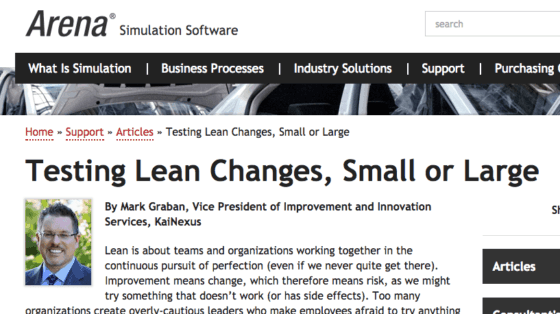Thanks to Arena Simulation Software for asking me to write this article for their regular customer newsletter:
“Testing Lean Changes, Small or Large“
The article is freely available to any reader:
Two short excerpts from the article:
“Lean is about teams and organizations working together in the continuous pursuit of perfection (even if we never quite get there). Improvement means change, which therefore means risk, as we might try something that doesn't work (or has side effects). Too many organizations create overly-cautious leaders who make employees afraid to try anything new because they might stumble or fail. Lean gives us mindsets and tools to minimize the risks involved with change while moving progress forward.
…
Change is scary…
It's part of our human nature and the way our brains are wired (see the excellent book The Spirit of Kaizen by Robert Maurer, PhD for more on this). Instead of lecturing people to somehow not to be afraid of change, there are a few more effective strategies that we can use. For one, we can involve people instead of forcing changes on them. Secondly, we can make sure we properly understand a problem and its causes, so we're doing a better job of anticipating which countermeasures or changes might work best. Thirdly, we can do a “small test of change,” trying a proposed change in one area or one site… to first Plan and Do on a small scale so we can Study that small change and Adjust if needed.”
Again, you can read the whole article here.
You can also hear my podcast interview with Dr. Maurer.
I hope you enjoy the article.
I'm traveling back today from a long weekend in Oregon, visiting (so to speak) the “gemba” or the place where the wine is actually made. Winemaking is, in many ways, a tradition-bound industry. “The way we've always done it” is often that way for a very good reason… but there are also different innovations and improvements in the wine industry that can be risky or scary (such as new types of packaging or stoppers that aren't cork).
Anyway, here are some of my previous posts about Lean and wine:
Gemba Wine: Variation in Wine Seals and Variation in Customer Needs
Gemba Wine: A Lean Geek Visits Wineries, Part 2
Gemba Wine: A Lean Geek Visits Wineries, Part 3
Over the past few days, I've seen the vineyard gemba, the place where the grapes are actually grown (those are Pinot Noir grapes):
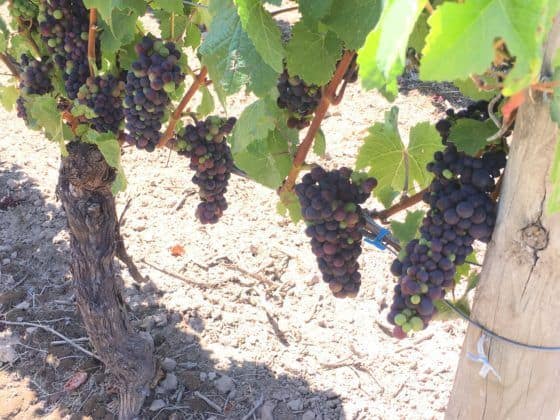

And there's the indoor gemba where the wine is fermented and then aged (a value-adding process that looks like inventory):
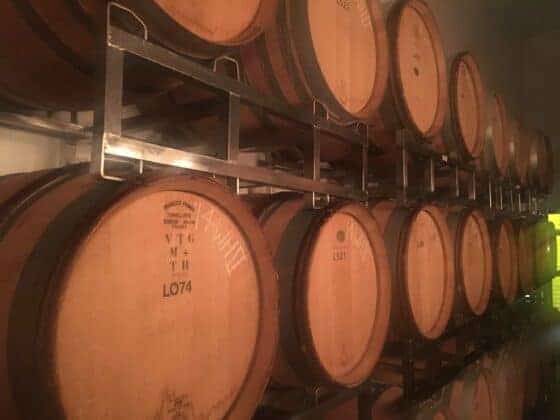
And the gemba where sparkling wine produced in the Champagne method is sometimes still “riddled” by hand (instead of the more modern and efficient automated process):
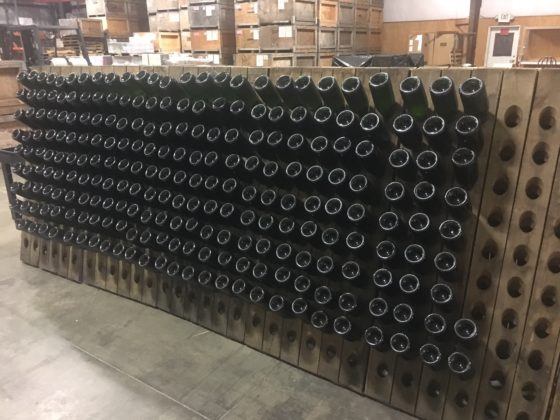
And the gemba where wine is bottled:
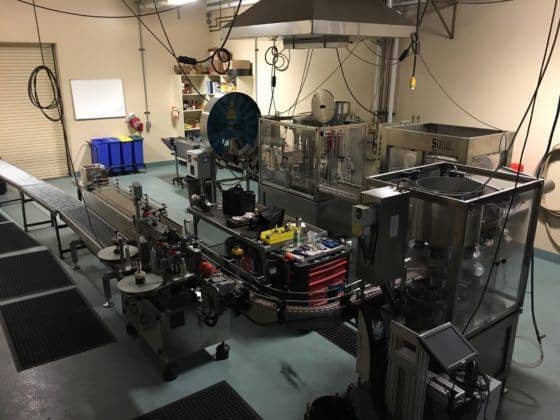
Because bottling requires relatively expensive capital and automation… and bottling isn't done all that frequently… most wineries rent capacity by scheduling mobile bottling trucks that pull up to the winery (one such company).
In one way, that's an efficient use of that capital. It's an example of cooperation within an industry and region so that a bunch of equipment doesn't sit around depreciating and going unused.
But, the wineries that can make the investment in owning a bottling line say that it gives them to flexibility to bottle the wine on the exact day the winemaker decides it's ready instead of forcing that step of the value stream into the pre-determined day that had been scheduled. It sounds like the mobile bottling trucks are pretty busy and can't be easily rescheduled.
So, there's a tradeoff in this instance between cost and quality for the winemaker in this one regard?
What do you think? Please scroll down (or click) to post a comment. Or please share the post with your thoughts on LinkedIn – and follow me or connect with me there.
Did you like this post? Make sure you don't miss a post or podcast — Subscribe to get notified about posts via email daily or weekly.
Check out my latest book, The Mistakes That Make Us: Cultivating a Culture of Learning and Innovation:



